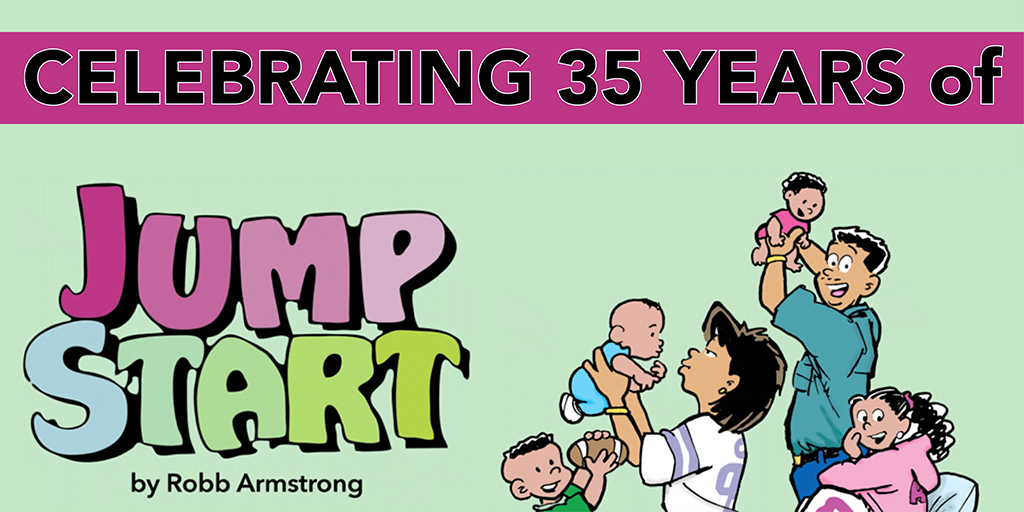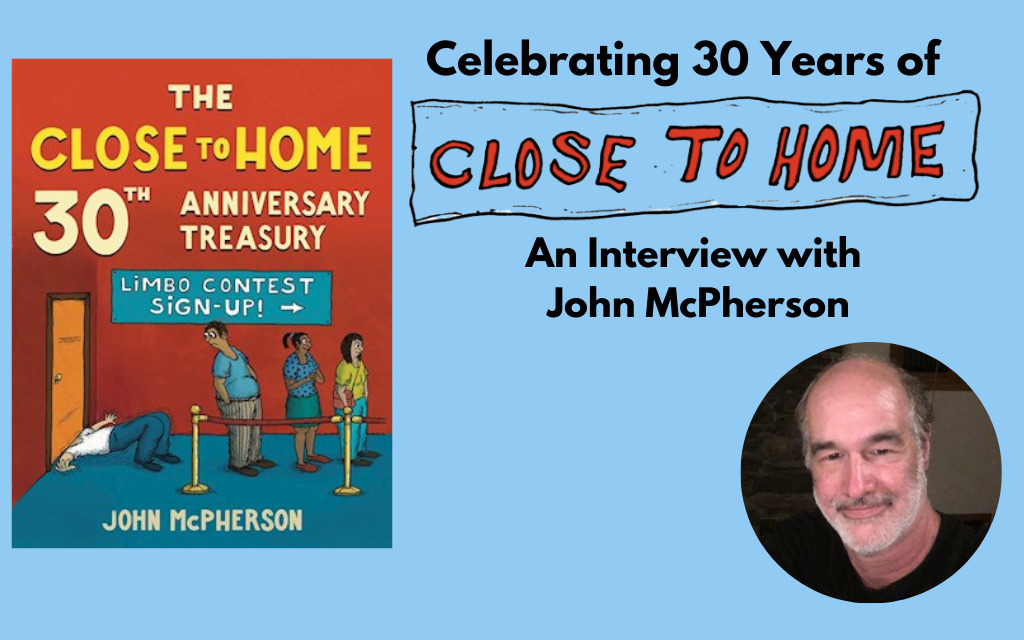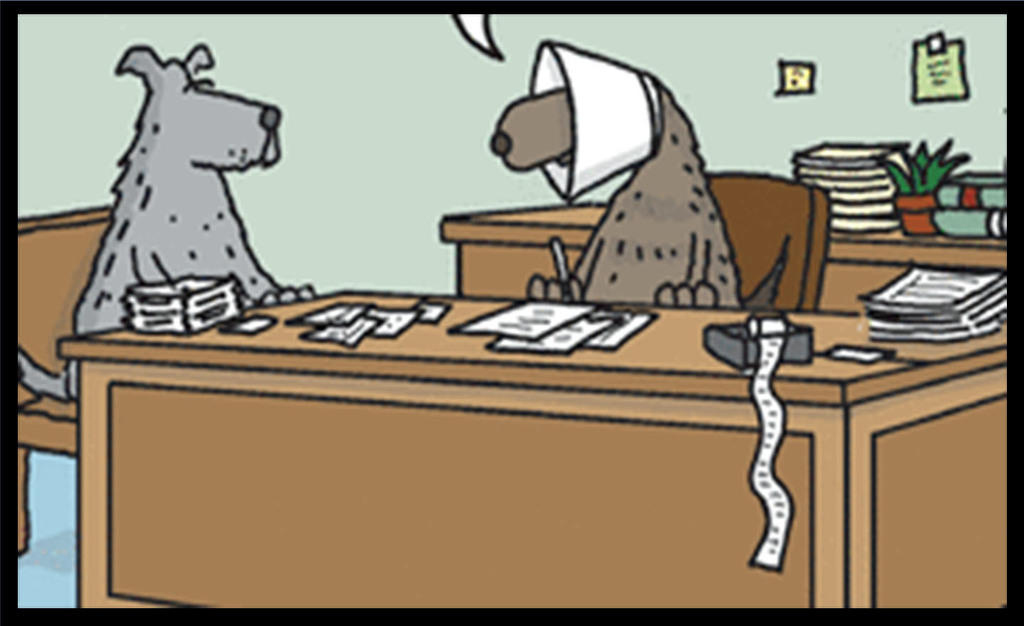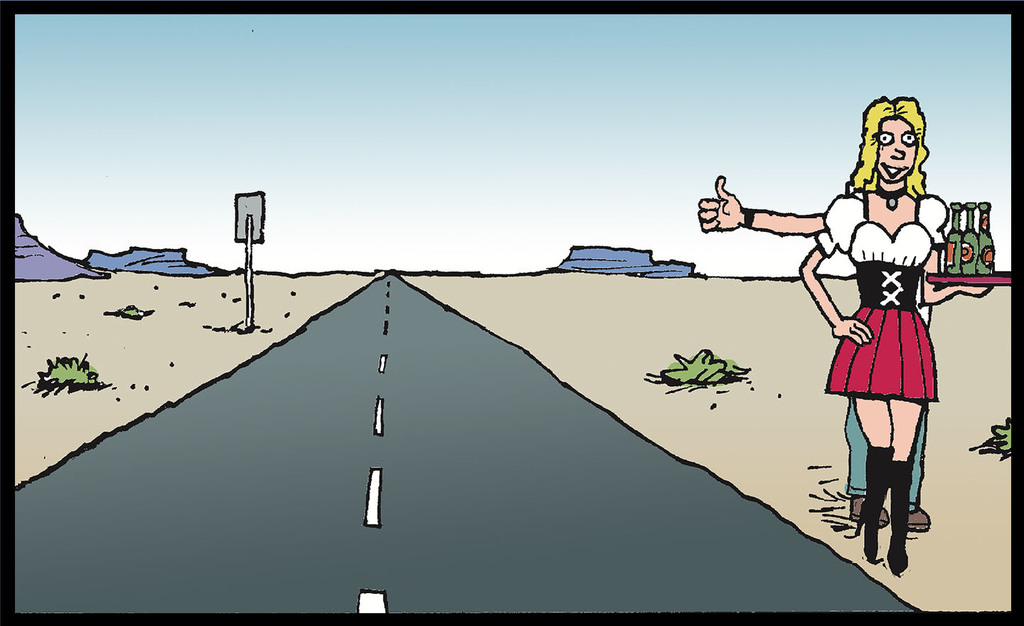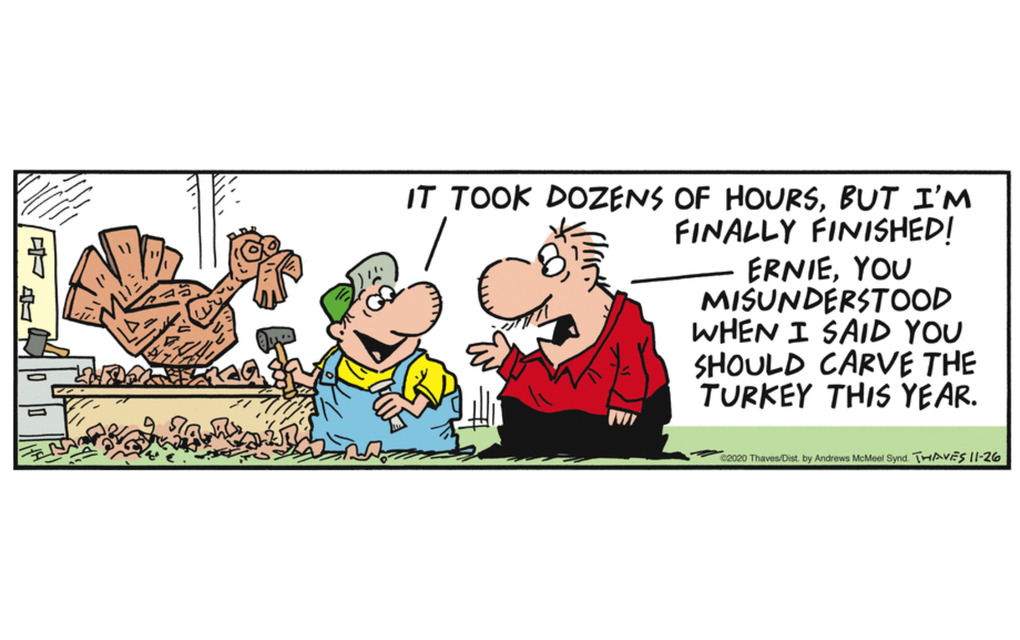Exclusive Interview with Calvin and Hobbes Editor Lee Salem
by GoComicsAn Exclusive Interview with Lee Salem
Lee Salem, former Universal Uclick president and editor, was instrumental in the discovery and development of Calvin and Hobbes, one of the most remarkable comic strips of all time. As this legendary comic celebrates its 30th anniversary, Lee shares his reflections regarding his professional and personal relationship with cartoonist Bill Watterson, and the legacy of Calvin and Hobbes.
1. Calvin and Hobbes grew to become an incredible phenomenon. What was it about Bill Watterson's work that initially caught your attention?
I remember first looking at Bill's submission for Calvin and Hobbes. It was so breathtakingly simple, fresh and professional that I had to set it aside with the thought, "This can't be as good as I think it is." On a second look, and subsequent looks, it was. It still is, to my mind. Bill had taken a near-universal situation - a child with an imaginary friend - and turned it into something archetypal. When I circulated the samples, the response was positive, though there was some concern about readers "getting" whether the tiger was real or imaginary. I think every strip in that initial submission made it into the starting set of six weeks.
2. How has editing Calvin and Hobbes changed the way you view comics?
Editing Calvin did not change the way I viewed comics as much as dealing with Bill changed the way I viewed the syndicate/creator relationship. For a few years, the relationship between us and Bill was very testy. We wanted calendars, products, licensing, and he wanted none of that. It became so acrimonious that Bill went public in a speech at Ohio State, calling us "money-grubbing bloodsuckers." That speech was picked up by the AP and I still wince when I think about it. Each side had its points, but eventually we were able to get past all that. The fact that Bill agreed to "The Complete Calvin and Hobbes" showed how far we had come.
3. You worked closely with Watterson for more than 10 years, remaining a friend after 30 years. Please share a few of your favorite memories of working with him.
From an editorial perspective, Bill was a dream to work with. If we didn't think something worked, he'd generally accept it. He was terrific on deadlines (though to this day he still thinks he ran late. I never let him think otherwise). In the early days of syndication of a strip, we'd review mailed-in roughs, then call the cartoonist. The goal was to reach a common understanding of what the characters were about and where the strip might be going. It didn't take long - less than two years, if my recollection is correct - to get to the point where all the roughs were fine, so Bill could just send in finished art. For Mike Cavna's Washington Post blog, Comic Riffs, Bill recalled watching me read a set of his roughs: "He could have been reading obituaries for all the delight he radiated." But I was trained by Jim Andrews, the co-founder and first editor of Universal, who one time chastised me for laughing at a cartoonist's roughs. "Don't ever laugh at a cartoonist's work in front of him. It's a sign of weakness."
4. Calvin and Hobbes fans were heartbroken when the comic strip ended on Dec. 31, 1995. Can you share what you felt and thought when he told you he wanted to end the strip? What were some of the factors that influenced his decision to retire the strip?
We had known for a while that Bill would retire, but coming one year after the end of The Far Side was tough to take, as a fan of the work of those two amazing cartoonists and as someone employed by the company that lost those two.
Bill thought he had said all he could say about Calvin and about Hobbes. Tom Thornton, then the publisher of Andrews McMeel Publishing, and I visited Bill to try to convince him otherwise. Clearly we failed. I think an additional factor was that Bill carried some wounds from the earlier period when our relationship had soured and the wounds continued to affect him. But the relatively short lifespan is part of the great allure and mythos of the strip. We or Bill's legions of fans might have wanted him to continue, but only he could make that decision. And he walked away at the top of his game.
5. You served as the liaison between Watterson and his fans. What was the most memorable piece of fan mail you ever received?
When the strip was in its heyday, the amount of mail was impressive and voluminous. This was before email had really caught on and it took effort for the many fans - both children and adults - to actually write and send a letter. Most of it was genuine fan mail and we generally handled it from the office. Bill decided early on that he could either do the strip or answer the mail. I felt particularly bad for the youngsters who had class assignments to write to "somebody famous" and anticipate a reply. I hope our form responses qualified! One of my favorites was from a young boy who complained that sometimes Calvin used "big words" and couldn't Bill just use words kids could understand.
6. Can you share a few of your favorite Calvin and Hobbes comic strips with us? Why do these particular comics stand out to you?
There's the one about "... And the one with "... Oh, and don't forget the Sunday in which "... I won't take that route. But one that still cracks me up was an early daily that showed Calvin at home, thermometer in his mouth, blanket drawn to his chin, watching TV. From the TV comes dialog from a very adult-sounding soap opera. In the last panel, Calvin turns to the reader and says, with a knowing smile on his face, "Sometimes I think I learn more when I stay home from school." Some readers actually claimed that strip encouraged kids to stay home and objected to their newspapers and to us.
And just one more. The last strip, the "Let's go exploring!" Sunday. Bill freed his characters and himself with that strip - and, I think, encouraged his readers to move on, too.
7. Watterson surprised and delighted fans worldwide when he collaborated with Pearls Before Swine creator Stephan Pastis on a series of comic strips in June 2014. Do you think we might see any new work from Watterson in the future?
Bill also publicly embraced the work of Richard Thompson, whose Cul de Sac is akin in spirit, artistic quality and understanding of children to Calvin and Hobbes. In 2014, Bill and Richard shared an exhibit at the cartoon gallery at Ohio State University. That and Bill's very funny collaboration with Stephan suggest a restlessness. So it may be that Bill returns to the drawing board with results the public can enjoy. But I believe that if that happens, it will not involve Calvin and Hobbes or regular deadlines. Those he has put aside.
8. Calvin and Hobbes was, and remains, amazingly popular, and has served as an inspiration for artists worldwide. Why do you believe it has such enduring appeal? How will it continue to influence the industry in years to come?
I know the fact of the strip's enduring appeal from my personal experience. In 1985 I brought home the early samples for my family to read. My then 11-year-old son exclaimed, "This is the Doonesbury for kids!" I used that line (with attribution, of course) in my presentation to our sales team. Several years ago, I entered the room of my 7-year-old granddaughter and I saw her reading a volume of "The Complete Calvin and Hobbes" , which was opened on her bed. "Julia! Calvin and Hobbes!?" I wondered aloud. Julia replied in a conspiratorial tone, "You know, Grandpa, Hobbes isn't really real." I didn't have the heart to tell her thatCalvin wasn't either, only a product of the remarkable artistry and imagination of Bill Watterson. I don't doubt that thirty years from now some young reader will stumble upon Calvin and Hobbes and re-discover how good comic strips can be. To my mind, that is Bill's great legacy, a challenge to readers to keep looking for the most talented and creative cartoonists and a challenge to cartoonists to keep trying to reach that goal.
- LEE


